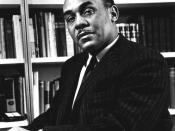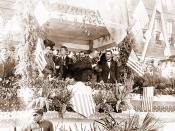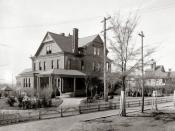Invisible Man, by Ralph Ellison, is filled with symbols and representations of the history of African-Americans. One of the most important and prevalent of these symbols is Ellison's representation of Booker T. Washington and the Tuskegee Institute. Throughout the book Ellison provides his personal views and experiences with these subjects through the college that TIM attends, the college Founder, and Dr. Bledsoe, the president of the college. Ellison uses these characters and other images and scenes related to Washington to show his disagreement with his backward ideals and to convey his theory that, "In order to deal with this problem [of emancipated blacks] the North"æbuilt Booker T. Washington into a national spokesman of Negroes with Tuskegee Institute as his seat of power"æ"à(O'Meally 23).
Booker T. Washington was one of the most influential black leaders of the late nineteenth and early twentieth century who advocated black accommodation to the white population of America, along with an emphasis on industrial education and personal hygiene for the African-American.
He advised black Americans to give up dreams of political power, civil rights, and the higher education of their youth and instead focus gaining low-level jobs, working hard, and achieving acceptance in the eyes of the white man. In Washington's most famous speech, the "Atlanta Compromise,"ÃÂ he states that, "In all things purely social we can be as separate as the five fingers, and yet one as the hand in all things essential to mutual progress"ÃÂ (Singleton 159). Ellison refers to this theory with his description of his grandparents lives in Invisible Man, "they were told that they were free, united with others of our country in everything pertaining to the common good, and, in everything social, separate like the fingers of the hand, And they believed it. They exulted in it. They...


